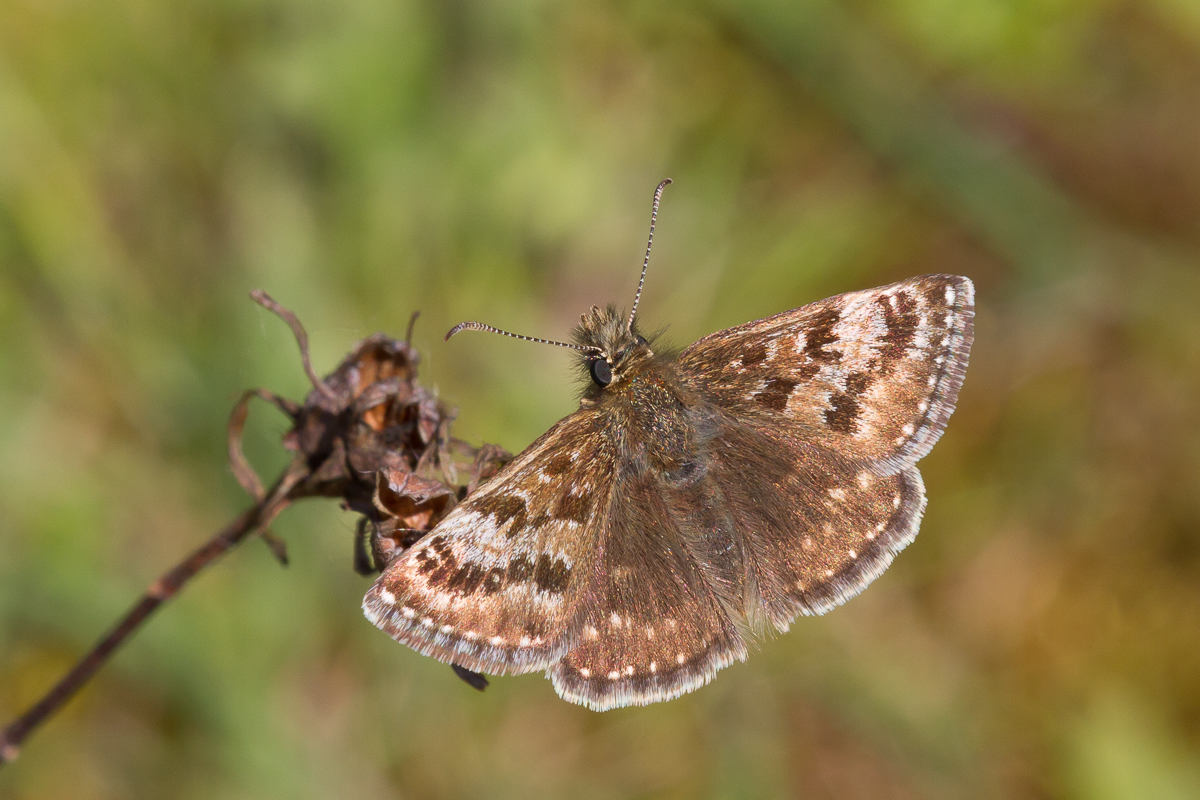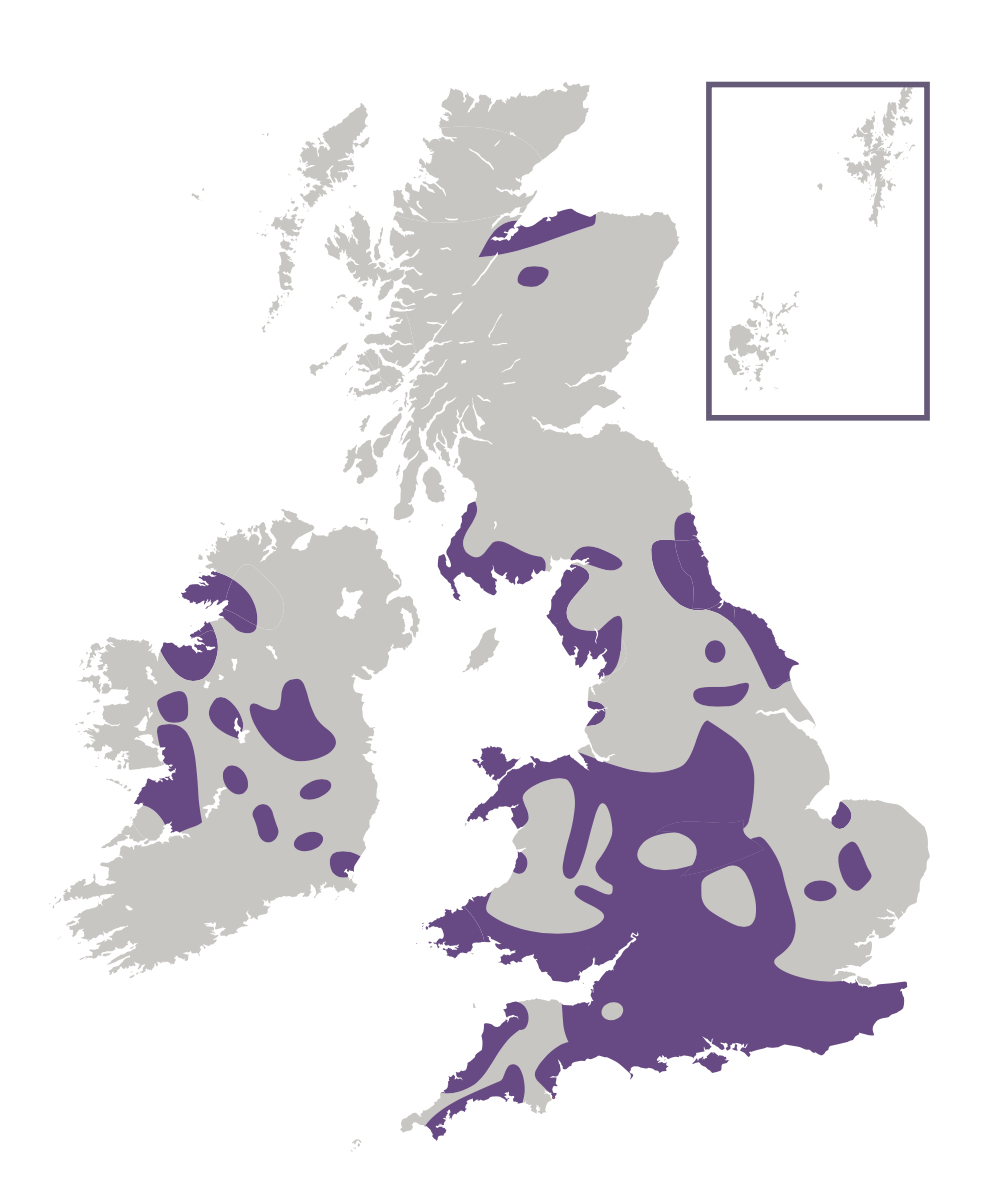
Photo © Peter Eeles
Despite its name, a freshly-emerged Dingy Skipper reveals a subtle pattern of browns and greys that is quite beautiful. However, this butterfly does live up to its name as scales are lost over time, resulting in a lacklustre and drab appearance. This is our most widely-distributed skipper, despite its decline due to changes in farming practice. Colonies can be found throughout the British Isles, including northern Scotland and Ireland where, although scarce, is found on outcrops of limestone. This butterfly's strongholds, however, are in central and southern England. This butterfly lives in discrete colonies with little interchange between them.
Like all skippers, the Dingy Skipper has an extremely fast flight that can be difficult to follow as it flits along, close to the ground. The butterfly is a warmth-loving species, and spends long periods basking on bare earth or a stone that has been baked by the sun. The butterfly prefers to nectar on yellow flowers and has a preference for flowers of Bird's-foot Trefoil, Horseshoe Vetch, Buttercup and Hawkweeds. In the late afternoon, the butterflies gather to roost on dead flowers or grass heads, where they take on a moth-like pose, with wings wrapped around the flower head.

The butterfly is found in warm open areas such as south-facing chalk and limestone downland, open hillsides, railway embankments, dunes, cliffs and abandoned quarries. It can also be found at the ends of woodland as well as in woodland clearings and rides.
Adults feed primarily on bird's-foot-trefoils (Lotus spp.), buttercups (Ranunculus spp.), hawkweeds (Hieracium spp.) and vetches (Vicia spp.). Bugle (Ajuga reptans) and Ragged-Robin (Silene flos-cuculi) are also used.
The primary larval foodplants are Common Bird's-foot-trefoil (Lotus corniculatus), Greater Bird's-foot-trefoil (Lotus pedunculatus) and Horseshoe Vetch (Hippocrepis comosa).
